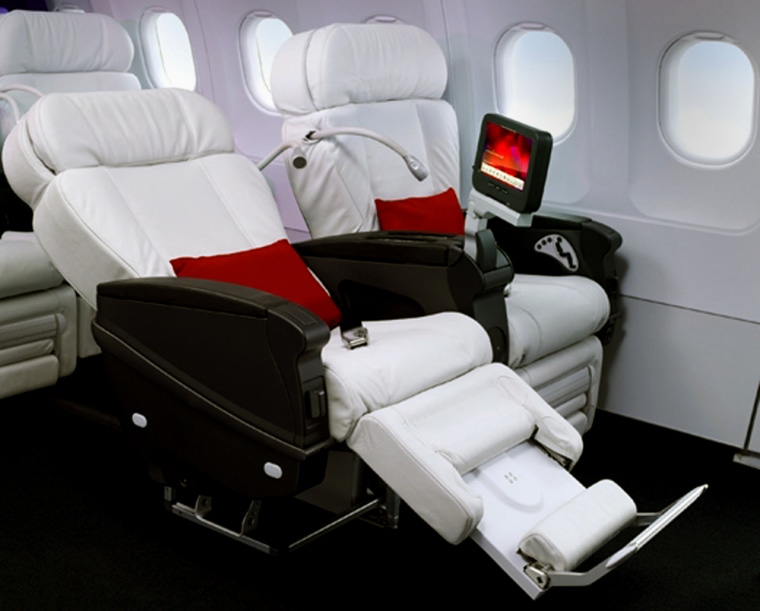A decade ago, in-flight entertainment consisted of watching a movie projected on a shared screen whose images were often distorted or blocked by fellow passengers' heads.
But like most things in the airline industry, entertainment systems have come a long way. Airlines are shelling out big money for high-tech gear in a bid to attract and keep more passengers.
It may be a double-edged sword, offering potential for more income, but at higher cost, while airlines struggle with near record fuel prices and fierce fare competition.
A new generation of in-flight entertainment, or IFE, systems, such as audio/video-on-demand and satellite TV, allows passengers to choose from new Hollywood films or television shows. They can start, stop, and fast-forward them on individual screens, adding choice and control.
But the state-of-the-art gear does not come cheap.
"Next to the engines, it's the second most expensive item on an aircraft," said Lori Krans, spokeswoman for Thales Aerospace, one of the world's largest IFE makers.
Analysts estimate prices range anywhere from $2 million to $5 million per aircraft.
British-based Inflight Management Development Centre has forecast worldwide airline spending on IFE equipment will rise to $1.6 billion this year from $1.4 billion in 2006. It pegged total spending between 2006 and 2011 at $12.9 billion.
The consulting firm also expects 76 percent of aircraft with more than 100 seats will have some type of IFE over the same period, up from 46 percent last year.
Air Canada now has about a third of its 199 planes equipped with high-end entertainment systems. It is in the middle of a $259 million overhaul it calls "Project XM: Extreme Makeover," in which it will install a screen in every seat in its mainline fleet by 2008.
Higher costs, fuel consumption
Monthly IFE expenses, from maintenance to royalties and licensing, add costs on top of airlines' initial investments. The systems are also heavy, increasing to fuel consumption.
Some tip the scales at as much as 5,000 pounds, although newer systems are lighter and smaller.
"It's not an inexpensive effort by any means," said Terry Wiseman, president of consulting service Aviation Industry Representatives.
Despite the multimillion-dollar investments, industry executives do not see the systems as direct revenue generators.
"In the long run, they'll see that value that they may not see in the short term: money making. But they are developing passenger loyalty," said Brenda Kuhns, marketing communications manager at Panasonic Avionics Corp., another IFE manufacturer.
Virgin America, which plans to start flying this year, took IFE a step further in January with its new entertainment system called Red, which allows allows passengers to order meals and drinks through touch-screens, whenever they want.
Thales Aerospace's Krans said leading-edge systems stand to cut costs and boost crew efficiency. They can also be used to conduct market research to measure viewership and customer satisfaction with airlines' service.
Some airlines aim to recoup entertainment-system costs through onboard advertising or charging for services.
Air Canada runs advertising in its video-on-demand. The airline predicted in its recent initial public offering prospectus that it could generate additional revenue from its IFE content, spokesman Peter Fitzpatrick said.
Its main rival, Calgary-based WestJet Airlines, offers live seat-back TV and pay-per-view movies. Spokeswoman Gillian Bentley said there is no plan for additional charges.
Analysts warn that if airlines pile on charges, passengers will just turn back to their own iPods and laptops.
That's why the next step may be to "create a commonality," to integrate passengers' own electronics with the on-board systems, Krans said.
Panasonic Avionics, for instance, has been working with Apple to integrate the 4th generation iPod into its system to allow charging and video-audio playback.
